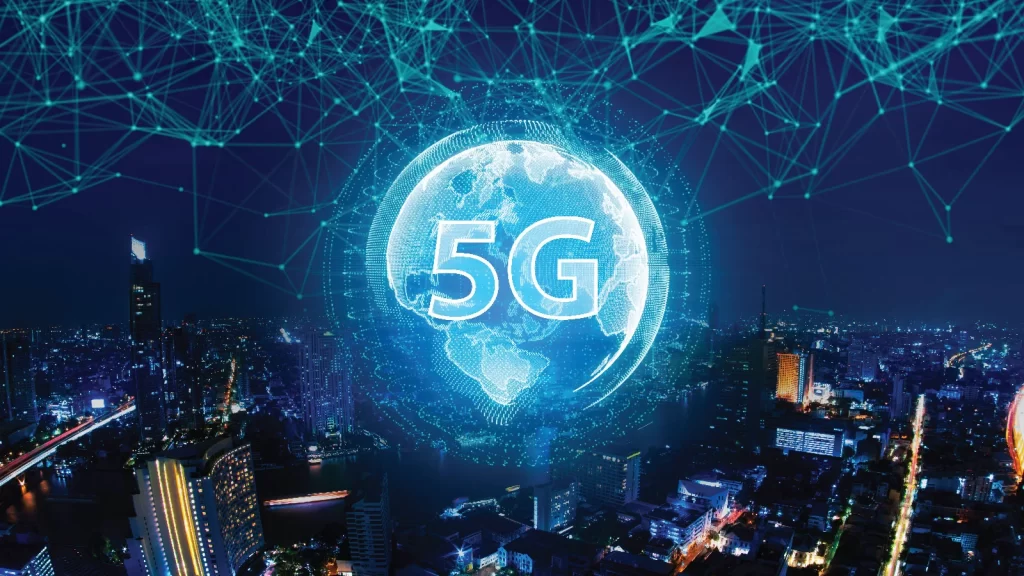Consumer demand for bandwidth-hungry apps such as HD streaming and advanced gaming is one of the main forces pushing 5G forward, but companies also require faster and more reliable connections in order to boost productivity.
Business leaders require an efficient network that supports innovation and helps them meet their financial, social, and environmental obligations. At the same time, they want to reduce costs.
The Internet of Things
5G connectivity enables devices to gain access to larger slices of radio spectrum without being disrupted by different signals that slow data transfers, providing sensors with increased connectivity for sending and receiving data at significantly reduced latency – giving businesses more power in creating smarter technologies.
Technology like this makes it easier for consumers to take advantage of immersive technologies like augmented and virtual reality, as well as supporting mission-critical services with ultra-reliable, low-latency communications – helping industries like transportation, utilities and manufacturing reduce costs while increasing productivity.
However, 5G won’t truly unlock its full potential until networks become more agile. That means adopting new technologies such as NFV, SDN and edge computing as well as working collaboratively with partners on innovation projects and business models – only then can 5G fulfill its promises of faster connectivity for both consumers and business users alike.
Connected Cars
Today there are billions of cars on the road and their numbers continue to expand exponentially. Many are connected, which may lead to major advancements in road safety with vehicle-to-vehicle communication (C-V2X).
Connected cars use wireless communication to exchange information with each other and infrastructure such as traffic signals, work zones, school zones or toll booths about road conditions, accidents or speed limits. C-V2X will also reduce congestion by keeping drivers aware of what lies ahead; improving both efficiency and safety.
Future 5G technology will allow vehicles to communicate directly with each other as well as pedestrians and cyclists using C-V2X (cellular vehicle-to-everything). This can save lives by alerting drivers if another car ahead is slowing down or about to brake unexpectedly; they could even inform drivers that it is safe for them to change lanes or exit freeways when there are clear lanes ahead.
Smart Cities
5G networks access an entirely different section of radio spectrum, providing greater capacity and data transmission speeds. However, due to costs associated with their implementation and implementation subsidies may have to be provided or consumer costs passed onto consumers – which could inhibit widespread adoption by low-income Americans.
Telcos must demonstrate the value of 5G as an investment by emphasizing business use cases that benefit all of society, such as ultra-HD virtual reality, immersive augmented reality, smart homes, self-driving cars and more. Factory automation, tactile low-latency touch steering or remote robotic surgery won’t become reality anytime soon despite being touted as key 5G mobile use cases.
Businesses looking to maximize 5G’s benefits need a flexible network that can easily upgrade and scale to meet demand. To do this, workloads need to be transferred away from traditional data center environments to edge servers for efficient operation more quickly.
Industrial Automation
Industrial automation is an ever-expanding trend that’s being propelled by a need for greater productivity, safety and sustainability. By helping organizations reduce environmental impact while optimizing operational efficiency, this technology enables businesses to compete more efficiently while at the same time strengthening their bottom lines.
Implementing automation solutions can reduce costs by replacing low-skill jobs with machines and reducing manpower needs, while meeting growing customer demands while meeting quality standards. Furthermore, automated processes can improve work safety by mitigating risks associated with dangerous environments and preventing long-term health effects associated with exposure to danger.
5G promises speeds 10x faster than 4G, opening up new opportunities for Digital Transformation. Businesses can use 5G technology for ultra-HD and 3D video, augmented reality applications, self-driving cars, smart cities and much more; any use case that demands automation, hyperfast analytics and low latency will find use in 5G technology.






More Stories
What is Best Available Technology?
How to Avoid Mobile Addiction
Internet Brands